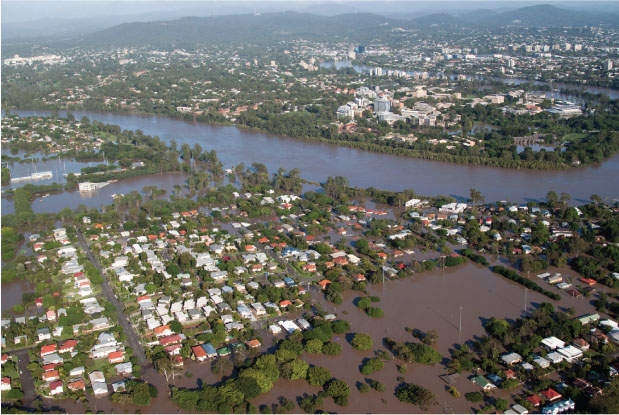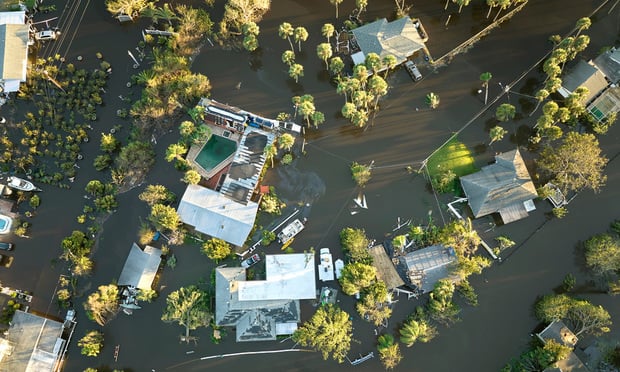Class-action lawsuits are a practical vehicle for litigation of losses resulting from natural disasters—due to the large number of plaintiffs residing in a limited geographic area where the value of an individual claim alone may not be worth pursuing. And with 2011 widely anticipated to be the costliest year for natural disasters ever reported, insurers could be facing the prospect of a flood of such suits.
 But insurers can take steps in advance of a catastrophe to minimize the likelihood of class-action exposure, including: diligent claims handing, ensuring compliance with relevant statutes, and continually reviewing and revising policy language to reflect lessons learned through litigation.
But insurers can take steps in advance of a catastrophe to minimize the likelihood of class-action exposure, including: diligent claims handing, ensuring compliance with relevant statutes, and continually reviewing and revising policy language to reflect lessons learned through litigation.
Step #1: Evaluate natural-disaster claims with an eye on preventing bad-faith claims
A predominant issue in natural-disaster class actions arises from claims of bad faith. Juries have returned multimillion-dollar awards to plaintiffs in class actions in which plaintiffs alleged that they were not properly paid for damages incurred following hurricanes Katrina and Rita. To prevent bad-faith claims, insurers should:
- Conduct a thorough investigation. A common claim in class actions is that the insurer failed to properly investigate the insured's claims and merely denied coverage. In August 2010, plaintiffs filed a class-action suit against Farmers alleging the company failed to thoroughly investigate plaintiffs' claims and pay full policy benefits in connection with wildfires in California. Further, plaintiffs alleged that Farmers hired consultants and investigators who improperly handled and denied benefits to insureds. To avoid claims of an unwarranted denial of coverage, resist taking shortcuts and investigate claims carefully. In addition, make sure your claims-handling procedures and policies are clear and are followed by employees.
- Document your investigation and all communications. Effective documentation of proper claims handling is key to avoiding bad-faith claims. The best way to avoid friction with insureds, which could lead to class-action litigation, is to communicate clearly and properly with them. If accusations of bad faith are raised, counsel should be consulted.
- Claims should be processed without delay. If an insured brings a bad-faith claim, the timing of the insurer's response to the claim will be highly scrutinized. In cases involving natural disasters, undue delay is particularly critical as the insured could be in a highly vulnerable position, such as without a home.
Step #2: Evaluate whether your claims-handling processes and procedures comport with statutory law
State legislatures have responded to insureds' complaints stemming from damage caused by natural disasters by enacting laws that place restrictions or additional requirements on insurers' claims-handling procedures.
Following Hurricane Katrina, the Louisiana legislature amended a statute to increase penalties for bad-faith claims handling and to allow insureds to recover attorneys' fees if successful in bad-faith litigation.
Compliance with state statutes governing claims handling or unfair claims-settlement practices is imperative to avoiding class-action litigation. Class actions are much more likely to be certified if plaintiffs allege statutory violations.
Step #3: Review and revise policy language regularly
In insurance-coverage cases, ambiguous clauses generally will be interpreted against the insurer. It is therefore imperative that all exclusion clauses be clear and unambiguous.
For example, in the case of In Re: Katrina Canal Breach Litigation, homeowners filed a class-action lawsuit against multiple insurers alleging that their “all risk” policies covered damage to their property caused by water, following levees breaching in New Orleans.
The defendants moved to dismiss, claiming that an exclusion in the policies prohibited coverage by a flood. The district court denied the insurers' motion, stating that the term “flood” was ambiguous. The Fifth Circuit had a different view and reversed the district court's ruling, holding that the term “flood” is commonly understood as a massive inundation of water onto dry land. Poignantly, the appeals court stated that “a flood is a flood,” rejecting plaintiffs' characterization that the policy's language was ambiguous.
The courts' different interpretations of even a seemingly simple term such as “flood” demonstrate that it is critical for insurers to continually review and analyze their policy language, as well as recent case law, to ensure their policy language is clear and explicit.
These preventive tips are simple measures insurers can take to reduce exposure to class-action litigation arising from natural disasters. Some of the tips can be performed during an insurer's regular business-practice review, while others, such as proper claims handling, should be addressed daily.
Want to continue reading?
Become a Free PropertyCasualty360 Digital Reader
Your access to unlimited PropertyCasualty360 content isn’t changing.
Once you are an ALM digital member, you’ll receive:
- Breaking insurance news and analysis, on-site and via our newsletters and custom alerts
- Weekly Insurance Speak podcast featuring exclusive interviews with industry leaders
- Educational webcasts, white papers, and ebooks from industry thought leaders
- Critical converage of the employee benefits and financial advisory markets on our other ALM sites, BenefitsPRO and ThinkAdvisor
Already have an account? Sign In Now
© 2024 ALM Global, LLC, All Rights Reserved. Request academic re-use from www.copyright.com. All other uses, submit a request to [email protected]. For more information visit Asset & Logo Licensing.








